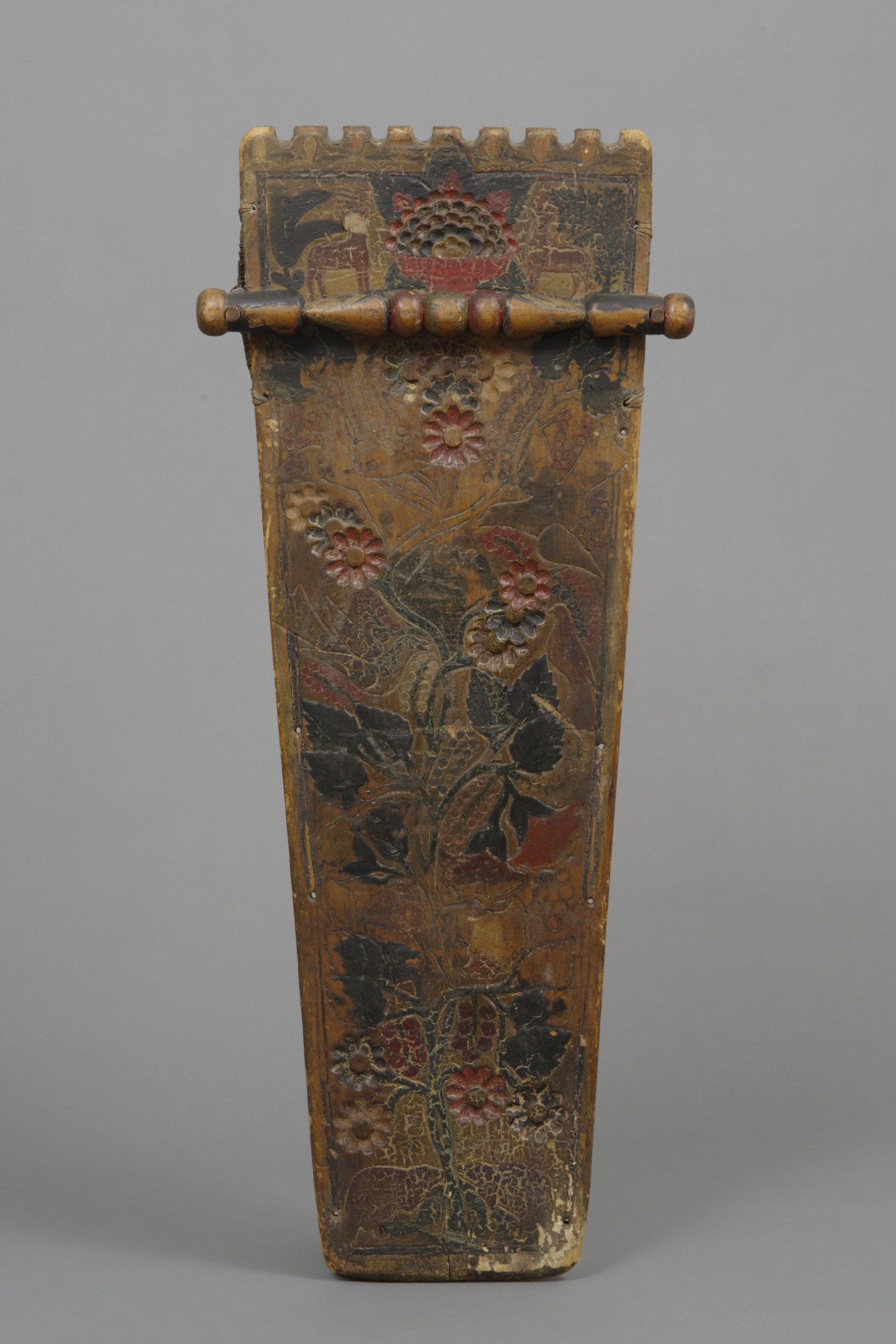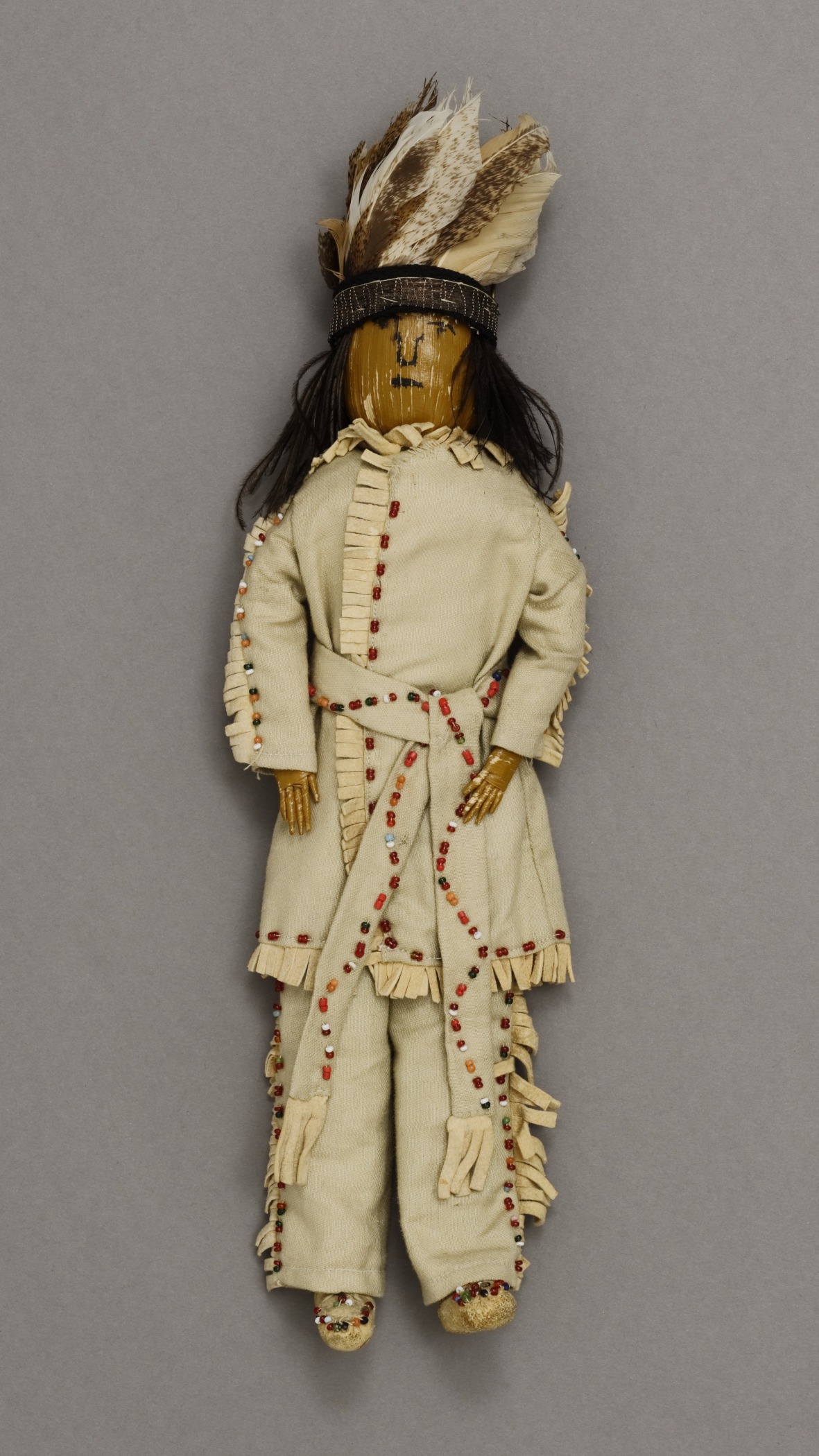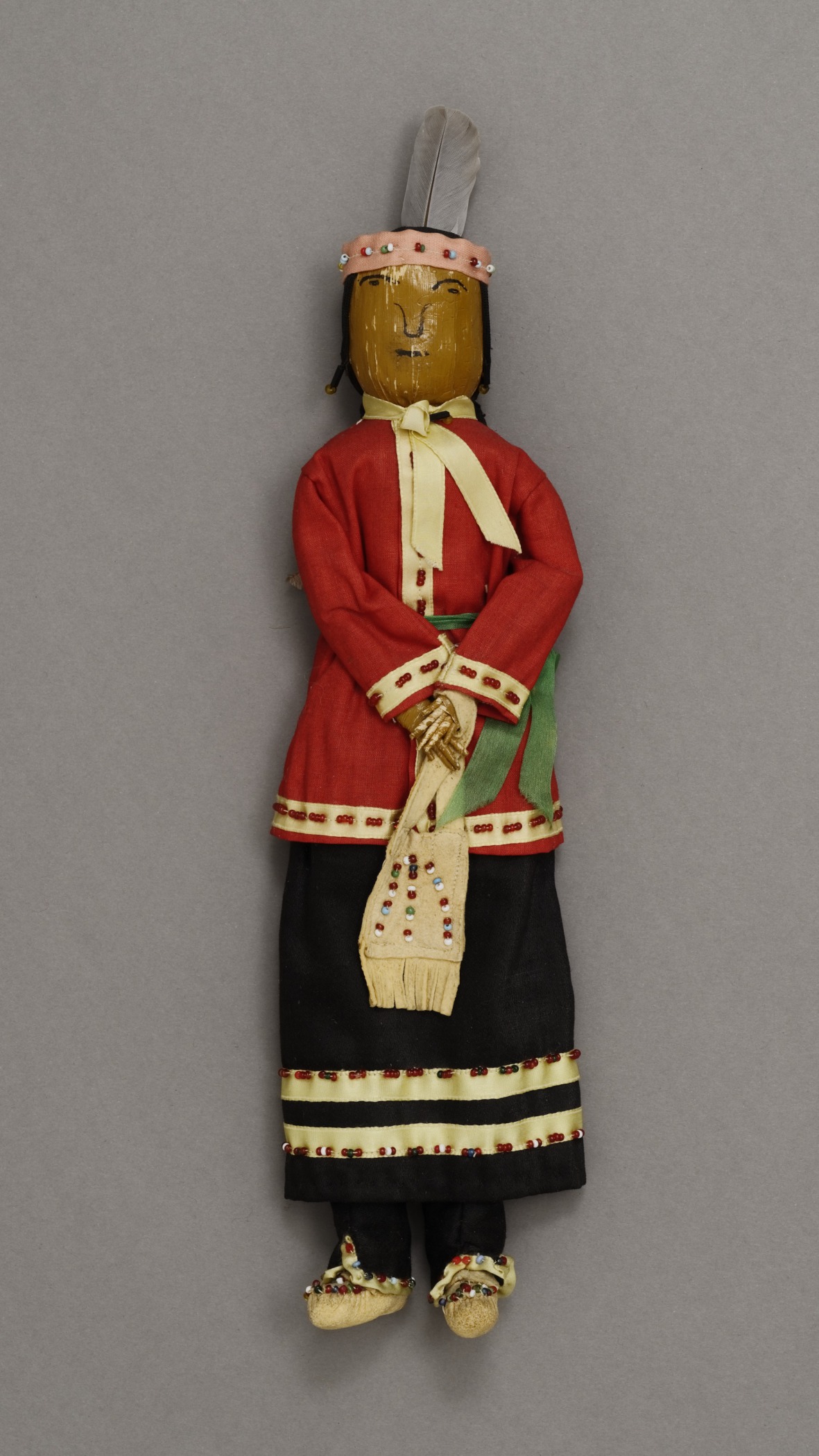Oneida (Haudenosaunee, Iroquois)
Doll representing an Oneida woman in traditional formal clothing
- 1946
- Corn husk, cotton cloth, ribbon, glass trade beads, buckskin, and feather
- 12 1/2 × 3 1/16 × 1 3/4 in.
Hood Museum of Art, Dartmouth College: The Wellington Indian Doll Collection, Gift of Barbara Wellington Wells; 987.35.26726
visibilityLook & DiscussThe unknown artist who created this cornhusk female doll also created a male doll in the Hood Museum’s collection. She lived on the Oneida Reservation in Wisconsin about 60 years ago. She made this doll for sale, but dolls like it were also made for young children to teach them about their roles in society.
Among the Oneida, women were largely responsible for caring for children, agriculture, preparing meals, and making clothing. They made baskets and pottery, and embellished clothing and items for sale with beautiful beadwork.
In addition, the Oneida, like all Haudenosaunee cultures, are matrilineal. Identity passes through the mother. The female head of a group of related families is known as a clan mother, and she makes decisions for the tribe, chooses male leaders, and watches over her extended family.
A young girl might have played with this doll and imagined her sewing or embroidering the deer hide bag that she carries. She would have admired the ribbon and glass beads that make the doll’s clothing beautiful, and she might have received scraps of cloth or hide to learn how to sew. This doll has a face drawn on the cornhusk head, but some cornhusk dolls do not have features, to teach young girls to avoid vanity, and also to allow them to imagine any features they might choose.
explore the object
Like many Indian dolls made for sale, this doll wears ceremonial clothing. Prior to contact with Europeans, the Oneida used deer hide for their clothing, and decorated it with porcupine quills and shells. Europeans brought cloth and glass beads, metal needles and embroidery thread. This doll’s clothing is a combination of naturally sourced materials and those acquired in trade. The doll’s skirt and shirt are made of cloth, but the moccasins are made of deer hide. Like real moccasins, the soles are hard for protection, while the tops are soft for comfort. The doll maker embellished the doll’s clothing, moccasins, and deer hide bag with ribbon and beads. Oneida women are known for their beautiful beadwork. Their skills helped to provide for their families by creating beaded items for sale.
The headband this doll wears is not a traditional Oneida headband. A traditional Oneida headband is more like a tiara, with a design of leaves, flowers, vines, or clan symbols beaded onto a stiffened band of velvet or wool.
This doll maker created a more generalized headband, perhaps reflecting the types of headbands worn by nearby Plains cultures, and the types of headdresses non-native visitors to the reservation might expect to see on a Native American doll.
learn more
For an excellent teacher resource on Native American dolls, access the Fall 2004 issue of Smithsonian in Your Classroom by the The National Museum of the American Indian.





